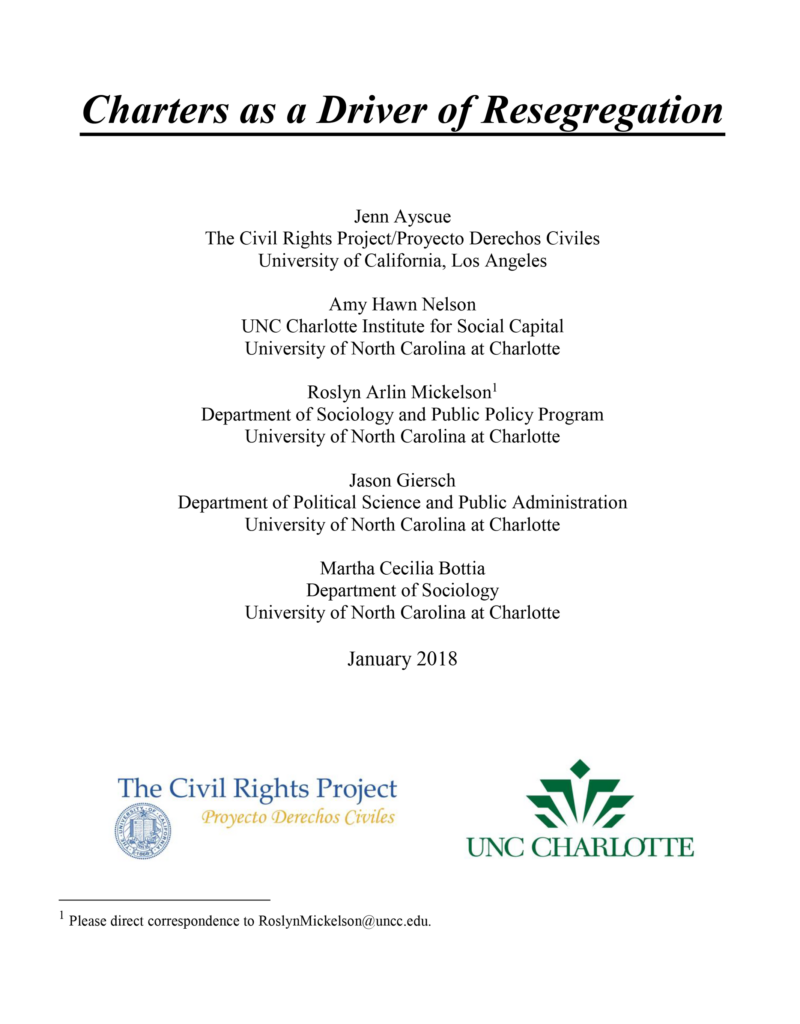Executive Summary
Expanding school choice through charter schools is among the top education priorities of the current federal administration as well as many state legislatures. Amid this push to expand the charter sector, it is essential to understand how charter schools affect students who attend them, as well as the ways charter schools impact traditional public schools in their communities. Building upon existing research that finds charter schools tend to be more segregated than traditional public schools, this report describes how charter schools also contribute to resegregation in traditional public schools. We explore the direct and indirect ways in which this occurs through a case study of Charlotte-Mecklenburg Schools (CMS) in North Carolina.
In 2016, CMS was the most racially segregated large school system in North Carolina. Consistent with national trends, charter schools are more segregated than traditional public schools in CMS. Moreover, while national discourse presents charter schools as an alternative to underperforming schools of poverty, in the Charlotte region, the majority of charter schools are located in suburban areas and serve primarily academically proficient, middle-class students who are largely white or Asian.
In an effort to reinstate diversity as one of its priorities, CMS adopted a new student assignment plan that expanded magnet school options and in May of 2017 redrew boundaries to break up high concentrations of poverty in many of the district’s schools. The new plan will affect few of the district’s students and only modestly shifts concentrations of poverty. Most of the schools with intense concentrations of educational and economic privilege or disadvantage will remain as they were under the former assignment plan—as will the racial isolation that accompanies socioeconomic segregation.
This report illustrates how charter schools undermined the capacities of CMS leaders to effectively redesign student assignment boundaries to achieve the district’s goal of breaking up high concentrations of poverty. Two central findings emerge:
- The departure of some middle-class, academically proficient students who are white or Asian from traditional public schools for charters directly made the task of socioeconomic and racial desegregation mechanically more difficult because their departure to the charters leaves fewer middle class white and Asian students in the traditional school, thereby contributing to more segregated schools in both sectors.
- The proliferation of charters in Mecklenburg County was grist for the political activism of suburban parents who threatened a middle-class exodus from CMS to the charter sector if new assignment boundaries did not honor their current neighborhood school assignments. These threats indirectly undermined policy actors’ initial willingness to act boldly and decisively in revamping pupil assignments to curb socioeconomic segregation.
Charlotte’s recent struggles with pupil reassignments illustrate how charter schools directly and indirectly drive resegregation among the traditional public schools.
In compliance with the UC Open Access Policy, this report has been made available on eScholarship: escholarship.org/uc/item/77r7j056
